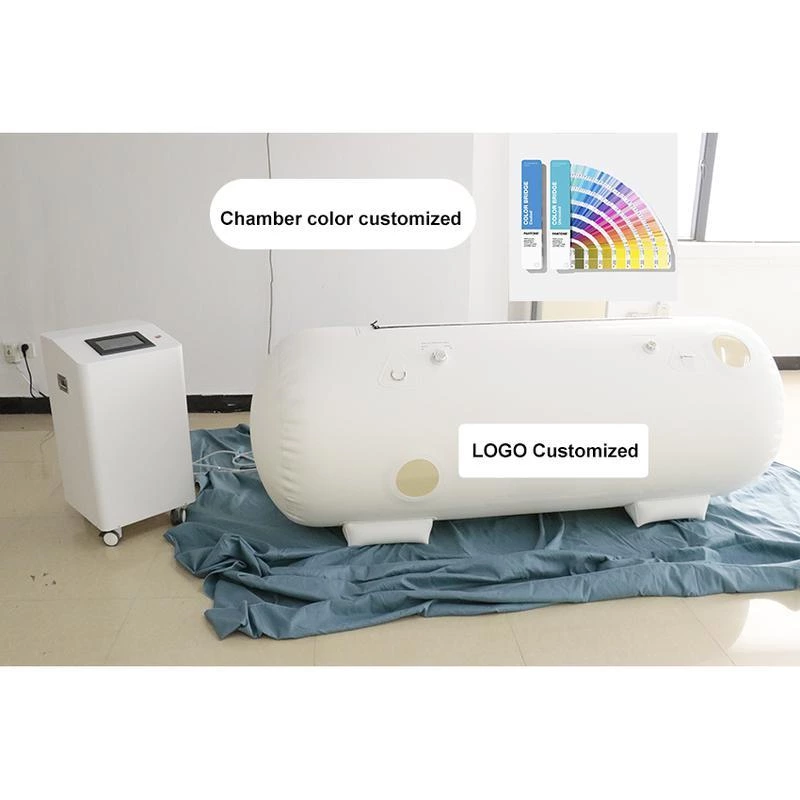HBOT stands for Hyperbaric Oxygen Therapy. It is a medical treatment that involves breathing pure oxygen in a pressurized environment.
HBOT
HBOT stands for Hyperbaric Oxygen Therapy. It is a medical treatment that involves breathing pure oxygen in a pressurized environment. Here is a detailed introduction:
Basic Principle
- In a hyperbaric chamber, the air pressure is increased to levels higher than normal atmospheric pressure. This allows the lungs to absorb more oxygen than they would at normal pressure. As a result, the concentration of oxygen in the blood and tissues increases significantly. The increased oxygen availability helps to promote various physiological processes, such as enhancing the body's natural healing mechanisms, improving circulation, and reducing inflammation.
Treatment Process
- The patient enters a hyperbaric chamber, which is a sealed, pressure - controlled environment. The chamber is then pressurized, usually to two to three times the normal atmospheric pressure. The patient breathes pure oxygen through a mask or a specialized breathing system while inside the chamber. The treatment sessions typically last from 60 to 120 minutes, depending on the specific condition being treated. Multiple sessions are often required to achieve the desired therapeutic effect.
Medical Applications
- Chronic Wound Healing: HBOT is commonly used to treat non - healing wounds, such as those caused by diabetes, venous insufficiency, or pressure ulcers. The increased oxygen supply promotes the growth of new blood vessels (angiogenesis) and the formation of healthy granulation tissue, which is essential for wound closure.
- Carbon Monoxide Poisoning: It is an effective treatment for carbon monoxide poisoning. High - pressure oxygen helps to displace carbon monoxide from hemoglobin and speeds up its elimination from the body, reducing the risk of long - term neurological damage.
- Decompression Sickness: Also known as "the bends," this condition occurs in divers who ascend too quickly. HBOT is used to treat decompression sickness by reducing the size of gas bubbles in the body and promoting their elimination. It helps to relieve symptoms such as joint pain, dizziness, and shortness of breath.
- Radiation - induced Tissue Damage: In patients who have received radiation therapy for cancer, HBOT can be used to treat radiation - induced injuries, such as damage to the skin, bones, or soft tissues. It helps to improve blood flow and oxygenation in the affected areas, promoting tissue repair and reducing the risk of complications.
Advantages
- Effective Treatment: HBOT has been proven to be effective in treating a variety of medical conditions, especially those related to tissue hypoxia (lack of oxygen). It can often achieve better results than traditional treatment methods alone, particularly in cases where other treatments have failed.
- Non - Invasive: The treatment is relatively non - invasive, as it does not involve surgery or the use of medications with significant side effects. This makes it a well - tolerated option for many patients, including those who may have contraindications to other forms of treatment.
- Few Side Effects: When performed properly, HBOT has few serious side effects. The most common side effects are mild and include ear pain (due to the pressure changes), sinus pain, and temporary vision changes. These side effects are usually reversible and can be managed with appropriate precautions.
Disadvantages and Risks
- Limited Availability: Hyperbaric chambers are not widely available in all hospitals and medical facilities. This may limit access to HBOT for some patients, especially those in remote areas or areas with limited medical resources.
- Treatment Duration and Frequency: HBOT often requires multiple treatment sessions over an extended period. This can be time - consuming and inconvenient for patients, especially if they have to travel long distances to receive treatment.
- Contraindications: There are certain conditions that may prevent a patient from receiving HBOT. These include untreated pneumothorax (collapsed lung), severe chronic obstructive pulmonary disease (COPD), and some types of ear or sinus problems. Pregnant women and patients with certain psychological disorders may also need to be carefully evaluated before undergoing HBOT.


